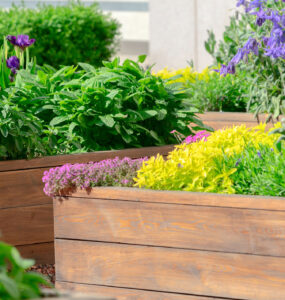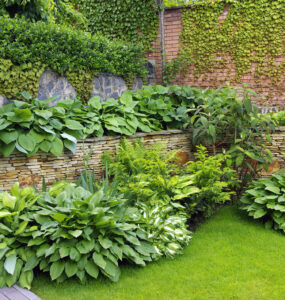
Gardening With Succulents
by Rob Sproule
Have you noticed that Succulents are everywhere? From wedding magazines and
home decorating magazines to sustainable gardening sites, they’ve become a versatile, alluring, easy-to-care-for wonder plant.
Increasingly, savvy gardeners are evicting high maintenance annuals from their
containers and looking to succulents’ elegance, ease, and, when you factor in keeping them year after year, affordability.
Choosing your Container
When planting an annuals container, which typically spill over the rim and obscure the container, the vessel is secondary. Succulents are much more subtle than annuals, replacing in-your-face flower madness with humble jewel tones and stately forms. Their subtle elegance, alongside the fact that few actually trail, makes choosing the container as important as choosing the plants.
Themed Succulent Containers
Opt for a shallow pot. Succulents’ roots, designed to catch rainfall over drilling into deep moisture, spread across the surface in a delicate and fibrous web. A deep pot would encourage deep, untapped soil to remain waterlogged. It could also throw off your proportion. With most succulents being short and slow growing, a tall pot (unless it’s tall for a design purpose, like an urn), could take the focus off the fabulous foliage. They key question to choosing a container is deciding what function you want it to serve. For a tabletop centre-piece, opt for a shallow clay or ceramic dish. More creatively, antique shops have innumerable options of wooden milk trays, metal dishes, and old shallow boxes to plant in. Make sure your vessel has drainage (or a material suitable for making your own drainage). If it’s old enough to have lead lined paint, consider a plastic liner (with holes for drainage) to protect the roots. Diminutive succulents, like echeveria and haworthia, would be a perfect fit.
For a pedestal top centrepiece to define the yard, choose a classic cast iron urn and plant a stately sword-leafed yucca with trailing string-of-pearls or burrows tail around it. One of the few plants to bring both fun and formality, succulents can turn your backyard into a classic French garden, even as they add a sense of play and whimsy.
Planting your Container
The fastest way to kill a succulent is to leave it in standing water. Drainage (meaning drain holes big enough so they won’t get clogged) is vital. If the container is deeper than 6″, start by adding a bottom layer of pebbles. This will ensure that soil below 6″ (which is all their roots need) doesn’t stay waterlogged.
Make it crowded. Succulents grow slow enough that they won’t gobble each other up like annuals will.
Add a cushion of cactus soil onto the rocks and set the plants on that. Don’t yank them out of the pots; tip the pots upside down, cupping the soil around the plant so it doesn’t fall, and gently squeeze till gravity delivers. You won’t need to slice, massage, hack, or otherwise man-handle the root ball.
The plants should be so crowded that there will only be small gaps between the root balls, so you shouldn’t need to add much soil. Tuck it into the grooves – gently – with your fingers, filling in all the air pockets but not tamping the soil into a stone. Check for settling after your first watering and add more soil as needed.
Caring for your Container
The joy of succulents is their ease of care. They thrive in our dry Alberta air and can take more direct sun than most plants (although Western exposures may still burn fleshier leaves).
Water more than a cactus, letting the soil dry out slightly between watering. Water until it flows out the bottom. This is called “flushing”, and is important with our water so salts don’t build up and affect the delicate roots. Flushing is especially important if you fertilizer, which should be at half strength every couple of weeks (and optional).
If you haven’t bought them before, you may get some sticker shock when shopping. While their slow growth makes them more expensive, it also makes them more affordable in the long run. They’re long living and subject to very few pests, so keep them year after year by planting them while still in their growing pots. At season’s end, lift them up, clean them off and bring them inside knowing that their roots are undamaged. Water them less in the winter as they slip into necessary dormancy.
Few things are more impressive in a container than a 5 year old succulent, especially a rosette tipped echeveria, that has grown to specimen size. Inside and out, these succulents become honorary pets, and you’ll start to plan not just containers, but entire parts of your yard, around them.















